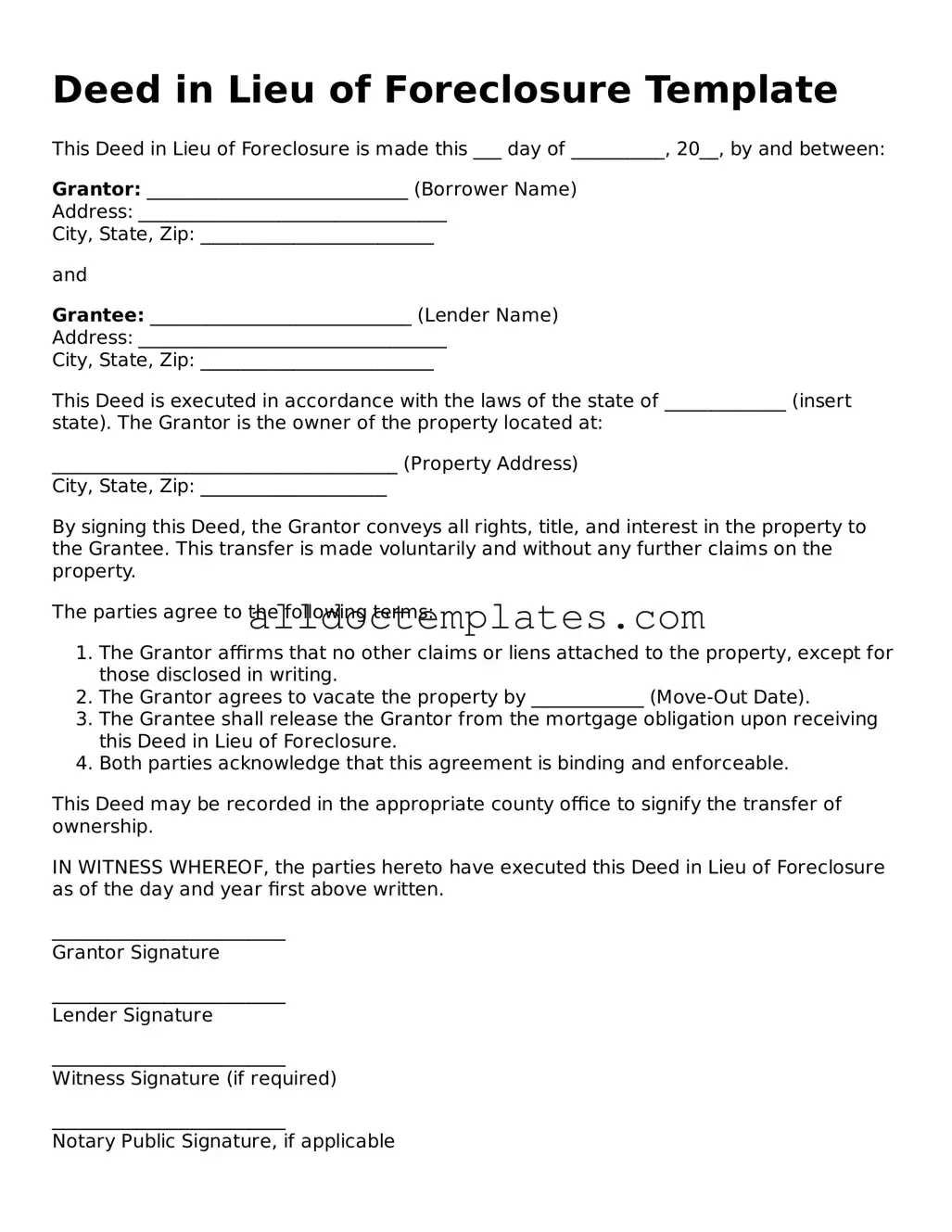Deed in Lieu of Foreclosure Template
This Deed in Lieu of Foreclosure is made this ___ day of __________, 20__, by and between:
Grantor: ____________________________ (Borrower Name)
Address: _________________________________
City, State, Zip: _________________________
and
Grantee: ____________________________ (Lender Name)
Address: _________________________________
City, State, Zip: _________________________
This Deed is executed in accordance with the laws of the state of _____________ (insert state). The Grantor is the owner of the property located at:
_____________________________________ (Property Address)
City, State, Zip: ____________________
By signing this Deed, the Grantor conveys all rights, title, and interest in the property to the Grantee. This transfer is made voluntarily and without any further claims on the property.
The parties agree to the following terms:
- The Grantor affirms that no other claims or liens attached to the property, except for those disclosed in writing.
- The Grantor agrees to vacate the property by ____________ (Move-Out Date).
- The Grantee shall release the Grantor from the mortgage obligation upon receiving this Deed in Lieu of Foreclosure.
- Both parties acknowledge that this agreement is binding and enforceable.
This Deed may be recorded in the appropriate county office to signify the transfer of ownership.
IN WITNESS WHEREOF, the parties hereto have executed this Deed in Lieu of Foreclosure as of the day and year first above written.
_________________________
Grantor Signature
_________________________
Lender Signature
_________________________
Witness Signature (if required)
_________________________
Notary Public Signature, if applicable
My Commission Expires: _______________
